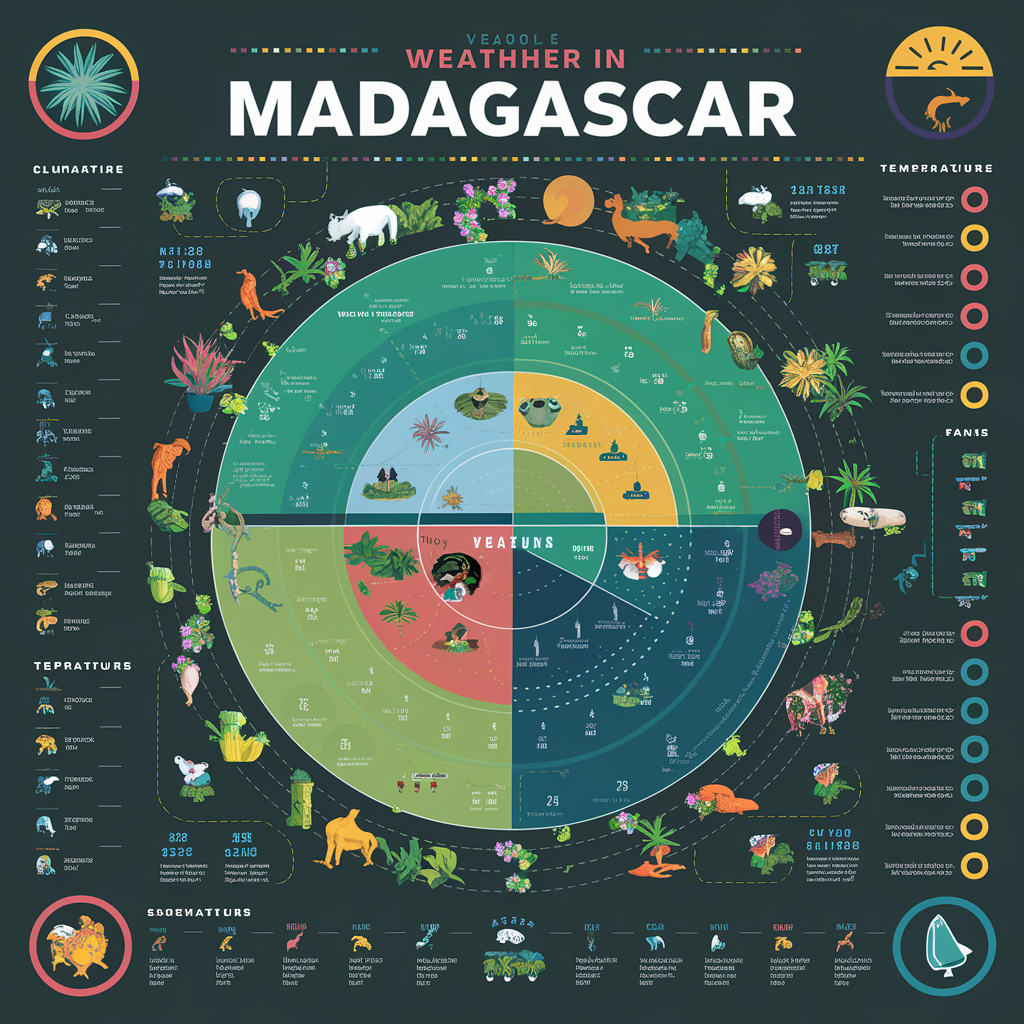Madagascar, the fourth largest island in the world, located off the southeastern coast of Africa, boasts a diverse and unique climate due to its size, topography, and position in the Indian Ocean. The island’s climate is influenced by various factors, including its geographical location, trade winds, ocean currents, and elevation differences. Understanding the weather patterns, seasons, and average temperatures in Madagascar is essential for Africa tour travelers, researchers, and residents alike.
Geographical Overview:
Madagascar’s geographical diversity contributes significantly to its varied climate. The island spans approximately 1,600 kilometers from north to south and features diverse landscapes, including rainforests, highlands, deserts, and coastal regions. Its position in the Indian Ocean exposes it to different climatic influences, including the monsoon winds and the Indian Ocean Dipole.
Climate Zones:
Madagascar can be divided into several climatic zones:
- Eastern Coast: The eastern coast of Madagascar experiences a humid tropical climate. Here, rainfall is abundant throughout the year, driven by the southeast trade winds. Rainforests dominate this region, receiving high amounts of rainfall, which sustains the island’s rich biodiversity.
- Western Coast: The western coast, in contrast, is drier compared to the east. It falls under the influence of the Indian Ocean, which brings less moisture, resulting in a more arid climate. The southwest region experiences a semi-arid climate, while the northwest tends to be drier.
- Central Highlands: The central highlands of Madagascar, including Antananarivo, the capital city, have a cooler climate due to their higher elevation. Temperatures are milder here, and rainfall is more seasonal, with distinct wet and dry seasons.
- Southern Region: The southern region of Madagascar is characterized by a semi-arid climate, with hot temperatures and low precipitation. This area often experiences drought conditions, particularly during the dry season.
Seasons:
Madagascar experiences two main seasons: the wet season (summer) and the dry season (winter). However, the timing and intensity of these seasons vary across different regions of the island.
- Wet Season (Summer): The wet season typically occurs from November to April. During this period, warm, moist air masses from the Indian Ocean bring heavy rainfall to much of the island, especially along the eastern coast and the northern regions. The wet season is essential for agriculture and supports the island’s lush vegetation.
- Dry Season (Winter): The dry season generally lasts from May to October. During this time, Madagascar experiences cooler temperatures and lower humidity levels. While the western and southern regions tend to be drier throughout the year, the central highlands receive less rainfall during the dry season.
Average Temperatures:
Madagascar’s temperatures vary depending on the region and elevation. Coastal areas experience warmer temperatures compared to the highlands, where the climate is cooler due to the higher elevation.
- Coastal Areas: Along the coasts, temperatures are relatively high throughout the year, with average temperatures ranging from 25°C to 30°C (77°F to 86°F). Coastal regions also experience high humidity levels, especially during the wet season.
- Central Highlands: The central highlands, including Antananarivo, have milder temperatures due to the higher elevation. Average temperatures in the highlands range from 15°C to 25°C (59°F to 77°F). During the dry season, temperatures can drop further, particularly at night.
- Southern Region: The southern region of Madagascar tends to be hotter, with average temperatures often exceeding 30°C (86°F) during the dry season. This area also experiences more significant temperature fluctuations between day and night.
Conclusion:
In conclusion, Madagascar’s climate is as diverse as its landscapes, offering a wide range of Madagascar experiences for visitors and residents alike. From the humid rainforests of the east to the arid deserts of the west, the island’s climate zones shape its ecosystems, agriculture, and way of life. Understanding the weather patterns, seasons, and average temperatures in Madagascar is essential for planning travel, agricultural activities, and environmental conservation efforts on this remarkable island.

